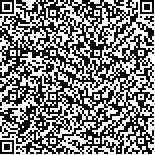| This article has been:browse 10843times Download 3474times |

Scan the code! |
|
|
| 西双版纳地区主要森林植被乔木多样性的时间变化 |
|
杨建波1,2,3, 马友鑫1,2*, 白 杨1,2, 曹 慧1,2,3
|
|
1. 中国科学院西双版纳热带植物园, 云南 西双版纳 666303;2. 中国科学院西双版纳热带
植物园综合保护中心, 云南 西双版纳 666303;3. 中国科学院大学, 北京 100049
|
|
| 摘要: |
| 为了评估云南省西双版纳森林植被乔木多样性的时间变化,该研究通过样方调查收集了该地区4种主要森林植被(热带雨林、热带季节性湿润林、热带山地常绿阔叶林和暖热性针叶林)乔木多样性数据,结合遥感影像提取了该地区4种森林植被在1992年、2000年、2009年和2016年4个时期的分布,用Simpson、Shannon-Wiener和Scaling物种多样性指数对比4种森林植被乔木均匀度差异,并利用Scaling生态多样性指数和灰色关联评价模型,评估该地区在4个时期的森林乔木多样性的时间变化。结果表明:(1)森林面积比例变化有先减少后增加的趋势,表现为由1992年的65.5%减少至2000年的53.42%,减少到2009年的52.49%,再增至2016年的54.73%,但热带雨林呈现持续减少的趋势。(2)4种森林植被对乔木多样性的贡献有明显差异,均匀度排序是热带雨林>热带山地(低山)常绿阔叶林>暖热性针叶林>热带季节性湿润林,丰富度排序是热带雨林>热带山地(低山)常绿阔叶林>热带季节性湿润林>暖热性针叶林,对乔木多样性贡献的排序是热带雨林>热带山地(低山)常绿阔叶林>热带季节性湿润林>暖热性针叶林。(3)热带雨林和热带季节性湿润林乔木多样性呈现持续减少趋势,4个时期西双版纳森林植被乔木多样性排序为1992年>2009年>2016年>2000年。以上结果表明经济活动是影响西双版纳生物多样性的重要原因,保护热带雨林对维持该地区生物多样性具有重要意义。 |
| 关键词: 西双版纳, 乔木多样性, 森林植被, 遥感, Scaling生态多样性指数, 灰色关联评价模型 |
| DOI:10.11931/guihaia.gxzw201810039 |
| 分类号:Q948 |
| 文章编号:1000-3142(2019)09-1243-09 |
| Fund project:国家自然科学基金(41501580); 中国科学院战略性先导科技专项项目(XDA05050206)[Supported by the National Natural Science Foundation of China(41501580); Strategic Priority Research Program of the Chinese Academy of Sciences(XDA05050206)]。 |
|
| Temporal change in tree diversity of main forest vegetation types in Xishuangbanna, Southwest China |
|
YANG Jianbo1,2,3, MA Youxin1,2*, BAI Yang1,2, CAO Hui1,2,3
|
|
1. Xishuangbanna Tropical Botanical Garden, Chinese Academy of Sciences, Xishuangbanna 666303, Yunnan, China;2. Center for
Integrative Conservation, Xishuangbanna Tropical Botanical Garden, Chinese Academy of Sciences, Xishuangbanna 666303,
Yunnan, China;3. University of Chinese Academy of Sciences, Beijing 100049, China
|
| Abstract: |
| To estimate temporal change of regional tree diversity in Xishuangbanna, Southwest China, for this, we selected sampling plots from four forest vegetation types through field survey, including tropical rainforest(TRF), tropical seasonal moist forest(TSMF), tropical lower montane evergreen broad-leaved forest(TEBF)and tropical coniferous forest(COF). We used remote sensing imageries to map the distribution of four forest vegetation types for four different time periods 1992, 2000, 2009, 2016. Evenness indices of Simpson, Shannon-Wiener and Scaling were used to compare the tree evenness difference among the four forest vegetation types. Scaling index and grey correlational evaluation model were used to measure the biodiversity change in Xishuangbanna in four periods. The results were as follows:(1)Forest area showed a decreasing trend during 1992 to 2009 and then increasing to 2016, proportion of changing forest area found to be 65.5% in 1992 decreasing to 53.42% in 2000, then kept 52.49% in 2009 and increasing to 54.73% in 2016, but TRF area showed a decreasing trend during 1992 to 2016.(2)Four forest vegetation types had a significant difference that contributes to biodiversity, the tree evenness of four forest vegetation types were in the order TRF> TEBF> COF> TSMF, the richness of four forest vegetation types were in the order TRF> TEBF> TSMF> COF, this sorting of vegetation's contributions to Xishuangbanna tree diversity was TRF> TEBF> TSMF> COF.(3)Tree diversity of TRF and TSMF showed a decreasing trend from 1992 to 2016, the tree diversity of Xishuangbanna forest vegetation in different time periods were sorted as 1992>2009>2016>2000. The present study indicates that economic activity is an important factor to affect the regional diversity in Xishuangbanna, and the conservation of tropical rainforest has a great significance in maintaining biodiversity in Xishuangbanna. |
| Key words: Xishuangbanna, tree diversity, forest vegetation, remote sensing, Scaling diversity index, grey correlational evaluation model |